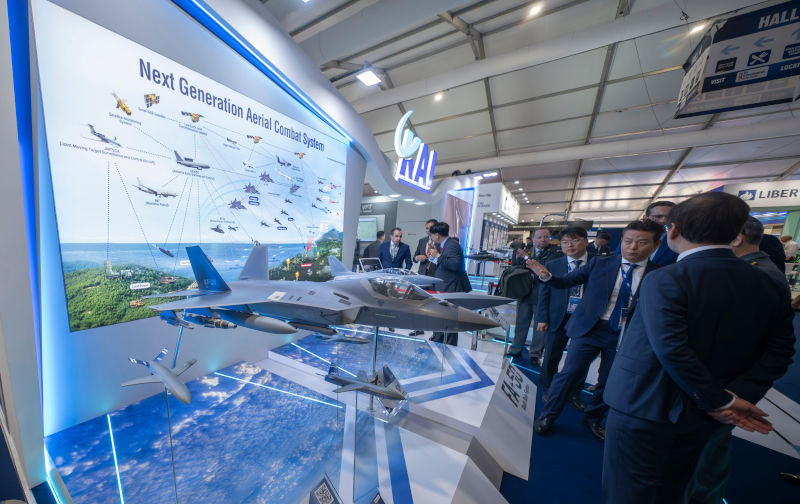Asia must learn from SEATO and build its own NATO
September 1, 2025
With China’s military assertiveness, North Korea’s expanding nuclear arsenal and defence collaboration between Russia, China and North Korea, there are growing questions about whether Asia needs its own version of NATO. Asia has endeavoured to establish such a structure in the past, with little success.
In 1954, the United States oversaw the establishment of the Southeast Asia Treaty Organisation to curb the spread of communism in the region. Yet, it had more of a symbolic function. SEATO only had three Asian participants — Thailand, Pakistan and the Philippines — and was dominated by Western powers like the US, the United Kingdom, France, Australia and New Zealand. India, Indonesia and Vietnam opted not to join the pact. Since SEATO lacked an integrated command mechanism or automatic defence obligation like NATO’s Article 5 and failed to halt the communist advance in Indochina, it was disbanded in 1977.
Though SEATO may be viewed as a product of the Cold War, it offers strategic takeaways relevant for Asia’s current security context. Unlike the 1950s, today’s Asia contains a network of bilateral treaties and minilateral initiatives. The US-Japan and US-South Korea alliances remain firm and Australia and the Philippines are strengthening their military engagement with Washington. New frameworks like AUKUS and the Quad are unlocking additional avenues for undersea capabilities and advanced technologies.
But these mechanisms are disjointed at best. Asia lacks a codified, NATO-style collective defence arrangement. While US-Japan-South Korea trilateral security collaboration is progressing, it is not a “collective alliance” capable of quickly undertaking joint action during regional emergencies.
Interest in a formalised security coalition is intensifying, with Tokyo, Seoul and Canberra attempting to align strategic policies to effectively and jointly address shared threats. But forming a coherent alliance in Asia is significantly more complicated than in Europe. Enduring historical animosity between Japan and South Korea can resurface when new leadership transitions occur in either country. Inconsistent threat assessments across leading Asian states pose another barrier. For example, India is hesitant to codify defence commitments within a binding treaty, while many Southeast Asian nations continue to adopt a hedging strategy between the United States and China.
Asia’s diplomatic tradition — especially the “ASEAN way” — emphasises consensus, non-interference and informality. While this approach might have contributed to preventing the outbreak of an all-out war, it has limitations in dealing with crises such as the South China Sea disputes and fails to ensure a swift collective response or institutionalised deterrence. Unlike Europe and the Middle East, where a collective security mindset has been shaped through conventional warfare, many Asian countries are still inclined towards diplomatic hedging.
But this culture of strategic ambiguity does not meet the urgency of today’s grey-zone threats, including cyber attacks and maritime coercion. A new security structure should confront this institutional inertia and gradually seek to overcome it.
The most critical distinction between Asia and NATO lies in the geographic landscape. In Europe, collective defence was imperative due to proximity and historical interconnectedness, while Asia faces heightened complexity due to its vast territorial span and political diversity. NATO was also founded under the unified perception of a Soviet threat, whereas Asia lacks such consensus.
Another pressing issue is China’s economic leverage. Asian governments seeking to bolster security links with Washington must weigh the risk of reduced market access or punitive trade measures from China, as faced by Australia and South Korea. Any future proposal to construct a regional security alliance in Asia must carefully account for these dynamics. Alongside building a collective security entity, actors should also actively pursue trade diversification and develop a credible regional economic support mechanism.
The strategic landscape of the 2020s presents a more favourable environment for fostering alignment among Asian states than in the 1950s. Shared exposure to economic coercion, cyber intrusions and grey-zone maritime tactics is drawing Asian democracies closer. More countries are acknowledging that bilateral partnerships alone are insufficient to manage complex, cross-domain threats. Co-ordinated planning, intelligence co-operation and compatible defence systems are now essential.
Asia should not replicate NATO’s blueprint or aspirations. Rather, regional actors should prioritise incremental measures aimed at enhancing joint operational effectiveness. Pragmatic initial steps include conducting regular multinational drills, creating unified crisis-response procedures and forming a permanent US-Japan-South Korea maritime security dialogue. These efforts could form the basis for a future formalised collective alliance.
Realising any regional security arrangement depends heavily on the credibility and consistency of US leadership. The Trump administration’s ambiguous and inconsistent signalling towards NATO has increased doubts about Washington’s long-term security commitments. This unpredictability means future discussions on Asia’s security planning must involve both US support and strong regional ownership. Enhancing self-reliant planning capacity, joint threat assessment and interoperability among Asian democratic nations will be key to ensuring the sustainability of regional alliances, regardless of changes in US foreign policy.
SEATO’s failure should not deter Asia from building a new model of regional defence co-ordination. Over-dependence on external powers, insufficient regional ownership and poorly designed institutions of the past are merely pitfalls to avoid. While today’s strategic conditions are different, current volatility demands even greater urgency. Asia does not require a NATO clone, but it urgently needs a more resilient and coherent security framework than the patchwork arrangements that exist today.
Republished from East Asia Forum, 27 August 2025
The views expressed in this article may or may not reflect those of Pearls and Irritations.
